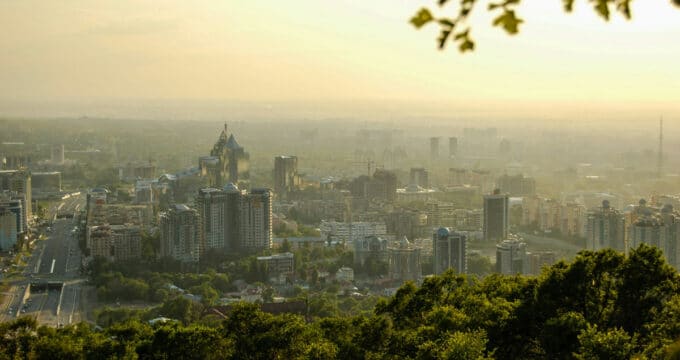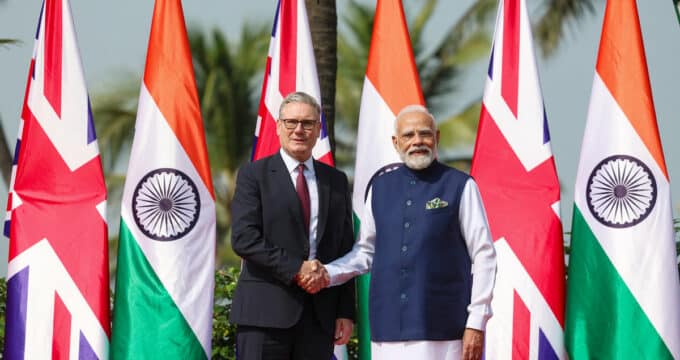Income growth continues to drive demand for study abroad in Sri Lanka
Sri Lanka has all the hallmarks of an important emerging market for international education. Roughly four in ten Sri Lankans are under 24 years of age, and the country is projected to have one of the ten fastest-growing tertiary enrolments through 2025. Even so, there is a major supply-demand gap with only enough university spaces to accommodate about 10% of those who sit the university entrance exams each year. The market is also being shaped by a hot economy. Aside from notable dips in 2009 and 2013, GDP growth has been trending between 6% and 9% per year for the past decade. By some estimates, Sri Lanka will have the highest annual percentage growth in household income over the next decade at 5.8% per year, outstripping other notable emerging economies such as Vietnam (5.5%) and Indonesia (4.3%). This growth comes against a low base, however, and Sri Lanka has only just passed through the US$10,000 GDP per capita benchmark that is often seen as the tipping point for purchasing power and the growth of the middle class in emerging markets. "Many of the countries that are experiencing strong growth in GDP overall and in the middle class are economically well-positioned for strong growth in their tertiary enrolments and therefore outbound student numbers,” says a recent report from the British Council. "These include China, Colombia, Egypt, Jordan, Indonesia, and Sri Lanka." "There is a restricted number of places at the better local universities,” agrees Chris Price, the CEO of Adventus Education and an international education advisor who has worked extensively in Sri Lanka in recent years. "So what you tend to find is that families are still investing heavily in their children’s education overseas. Having an international education is seen as a very prestigious thing." For educators approaching the market for the first time, or in the early stages of building an enrolment base from Sri Lanka, Mr Price recommends a focus on the country’s top private and international schools. He also points out that for many recruiters, Sri Lanka can be part of a broader regional effort. "I don’t know an institution that is not active in India. And you can jump on a plane and be in Colombo in an hour from Bangalore, and two-and-a-half hours from Delhi.” Facebook is an important channel for reaching Sri Lankan students as the platform is widely used in the country, and Mr Price stresses as well the importance of local staff, whether in the form of a qualified agent or Sri Lankan staff hired directly by an overseas institution that can support local students and families and represent the institution in-country throughout the year.
Opening up to new destinations
Because of strong historical ties to Britain – the country was a British colony until 1972 – the UK has long been a leading study destination for Sri Lankans. However, Australia is now the clear leader, owing both to the expansion of marketing and recruitment on the part of Australian institutions and a declining interest in the UK in the wake of more restrictive immigration policies there. It seems clear as well that the market is opening up to new destinations as it continues to grow. Mr Price indicates an increasing interest in Canada and the US, both of which offer opportunities for students to stay on and work, and perhaps even immigrate, after graduation. But Sri Lankan students are looking also at destinations in Europe, often for very specific programmes of study (such as engineering degrees in Germany or technology studies in Ireland), and many are also choosing regional destinations as well, such as Malaysia, Singapore, and India. Such intra-regional movements are often not well counted in official mobility statistics, and this makes accurate, contemporary figures hard to come by in a market like Sri Lanka. Based on his observations of the market, Mr Price estimates the current level of outbound "in the region of 50,000 students per year," with the vast majority of those students pursuing undergraduate degrees abroad. There is also a brisk trade in transnational education (TNE) programmes in Sri Lanka, with an increasing field of foreign institutions delivering part of all of their degree programmes in-country. In effect, this sets up a couple of broad tiers in the market with wealthier families sending their students abroad for complete degree programmes and a further segment of demand for the more affordable option of completing two years (or more) of an undergraduate degree locally. This reflects in part the earlier point regarding the US$10,000 GDP benchmark for purchasing power. As average income levels in Sri Lanka continue to grow through 2020 and beyond, demand for education is also expected to expand further. "This [lower household income base] is likely to constrain how soon [emerging markets] close the gap in tertiary enrolment rates on advanced economies," adds a related British Council report. "But it does also mean the decade beyond 2020 should see continued rises in enrolment ratios and strong growth in tertiary education demand." In simpler terms, the increasing outbound numbers we see in Sri Lanka today may be only the start of a larger growth curve over the next 10 to 15 years.
Spending on higher education
Once we start looking at a time horizon of a decade or more, the question of the capacity of the Sri Lankan system comes back into focus as an important factor in shaping those longer-term trends in the market. Students were a significant factor in electing Sri Lanka’s new government in January 2015; they provided strong support at the polls and had long protested the poor state of public education in their country. The new administration, headed by President Maithripala Sirisena, offered a unifying vision for the country’s various ethnic and religious groups, and it has painted an optimistic picture for the future of higher education in Sri Lanka. Most recently, the government has promised a significant increase in educational spending for 2016 and more autonomy for universities. This is a notable development as government spending on education has been modest for years. In fact, at just 1.7% of GDP, Sri Lanka ranks among the world’s lowest spenders on education, behind countries like Eritrea and Chad and just above Central African Republic and Zambia. But the government has promised a four-fold increase to the education budget in 2016 (from 1.7% of GDP to 5.6%) and to increase spending on universities by 30%. For its part, UNESCO has recommended an expenditure level for Sri Lanka equivalent to 6% of GDP, which Sri Lanka has said it aims to reach by 2020.
The role of private providers
Echoing the approach in other emerging markets, the government appears to also be looking to the private sector to help address local capacity challenges. Higher Education Minister Lakshman Kiriella has said that the government believes more private universities are needed to improve Sri Lankan education. On a recent trip to Qatar, where more than 125,000 Sri Lankans have emigrated, he asked educational professionals there to explore the possibilities of setting up more private universities in Sri Lanka. He has since hinted that several foreign universities have expressed interest. As yet no approval has been given for branch campuses but more detailed discussions are slated to occur. What seems clear for the moment is that the government of President Sirisena has broken with the spending patterns of the past regarding education. The budget has been approved and there is broad agreement that the country should transition to a knowledge-based economy. As the President said in February, "The present government has allocated funds from the budget for the education sector in a way that no other previous government did." Time will tell how this new spending will translate into expanded access to university within Sri Lanka, and the role that both private and foreign providers will play in meeting the growing demand for higher education in the country.
Most Recent
-
Asia “consolidating as the leading destination region” for international students Read More
-
Kazakhstan sets its sights on being a regional hub for international students Read More
-
US: Study estimates that changes to international student policies could reduce GDP by up to US$481 billion per year Read More
















